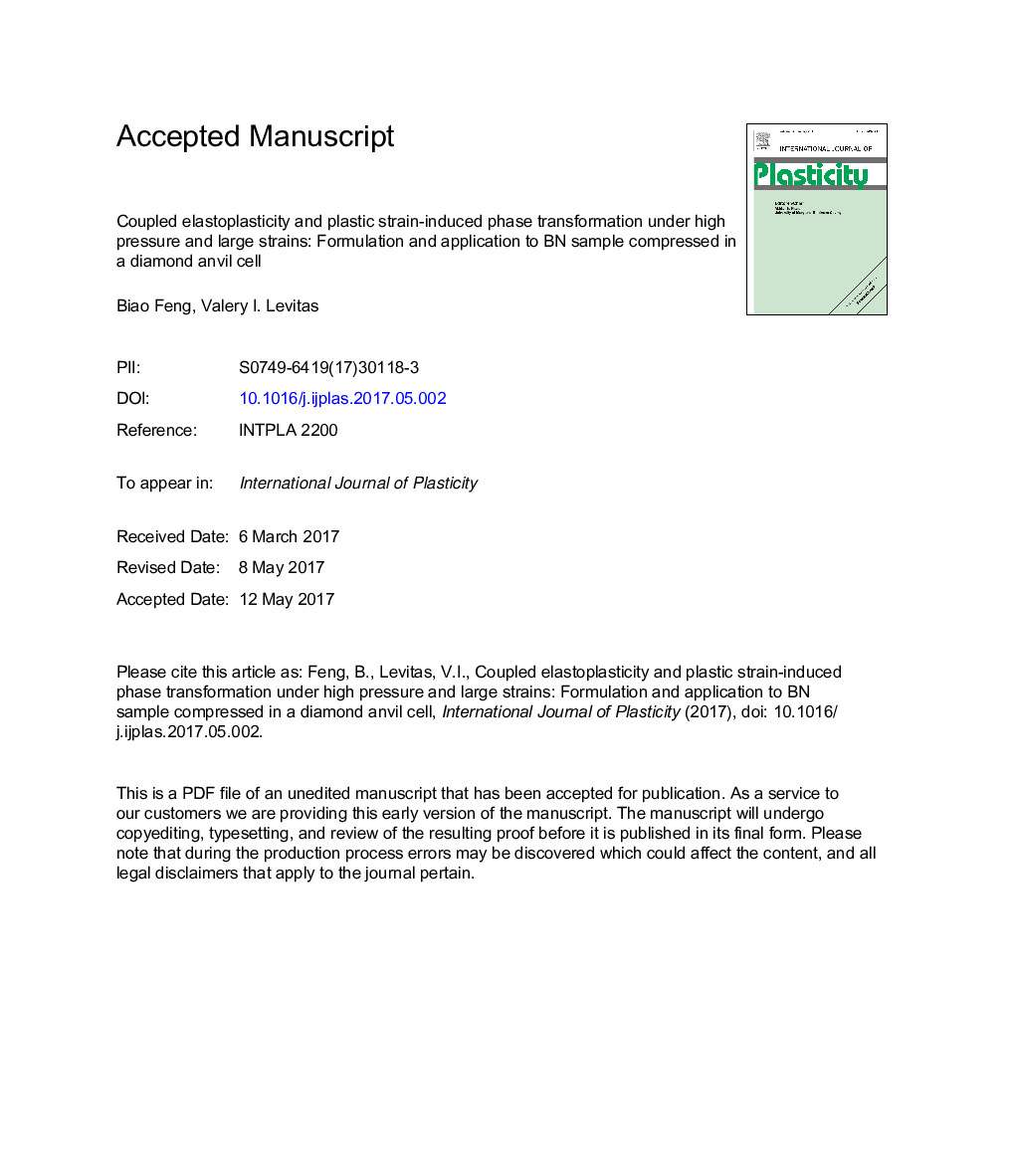| کد مقاله | کد نشریه | سال انتشار | مقاله انگلیسی | نسخه تمام متن |
|---|---|---|---|---|
| 5016751 | 1465577 | 2017 | 66 صفحه PDF | دانلود رایگان |
عنوان انگلیسی مقاله ISI
Coupled elastoplasticity and plastic strain-induced phase transformation under high pressure and large strains: Formulation and application to BN sample compressed in a diamond anvil cell
دانلود مقاله + سفارش ترجمه
دانلود مقاله ISI انگلیسی
رایگان برای ایرانیان
کلمات کلیدی
موضوعات مرتبط
مهندسی و علوم پایه
سایر رشته های مهندسی
مهندسی مکانیک
پیش نمایش صفحه اول مقاله

چکیده انگلیسی
In order to study high-pressure phase transformations (PTs), high static pressure is produced by compressing a thin sample within a high strength gasket in a diamond anvil cell (DAC). However, since a PT occurs during plastic flow, it is classified and treated here as a plastic strain-induced PT. A thermodynamically consistent system of equations for combined plastic flow and plastic strain-induced PTs is formulated for large elastic, plastic, and transformation strains. The Murnaghan elasticity law, pressure-dependent J2 plasticity (both dependent of the concentration of a high-pressure phase), and plastic strain-induced and pressure-dependent PT kinetics are utilized. A computational algorithm within finite element method (FEM) is presented and implemented in a user material subroutine (UMAT) in the FEM code ABAQUS. Combined plastic flow and strain-induced PT from the highly-disordered hexagonal boron nitride (hBN) sample to a superhard wurtzitic wBN is simulated within the rhenium gasket for pressures up to 50Â GPa. The evolution of the fields of stresses and plastic strains, as well as the concentration of phases in a sample is obtained and discussed in detail. Stress-strain fields in a gasket and diamond are presented as well. An unexpected shape of the deformed sample with almost complete PT in the external part of the sample that penetrated the gasket was found. Obtained results demonstrated the difference between material and system behavior which are often confused by experimentalists. Thus, while plastic strain-induced PT may start (and end) at plastic straining slightly above 6.7Â GPa, it is not visible below 12Â GPa. It becomes detectable at 21Â GPa and is not completed everywhere in a sample even at a maximum pressure of 50Â GPa. Due to a strong gasket the gradient of pressure is much smaller than the gradient of plastic strain, and therefore the distribution of the high pressure phase is mostly determined by the plastic strain field instead of the pressure field. Possible misinterpretation of the experimental data and characterization of the PT is discussed. The developed model will allow computational design of experiments for synthesis of high-pressure phases.
ناشر
Database: Elsevier - ScienceDirect (ساینس دایرکت)
Journal: International Journal of Plasticity - Volume 96, September 2017, Pages 156-181
Journal: International Journal of Plasticity - Volume 96, September 2017, Pages 156-181
نویسندگان
Biao Feng, Valery I. Levitas,